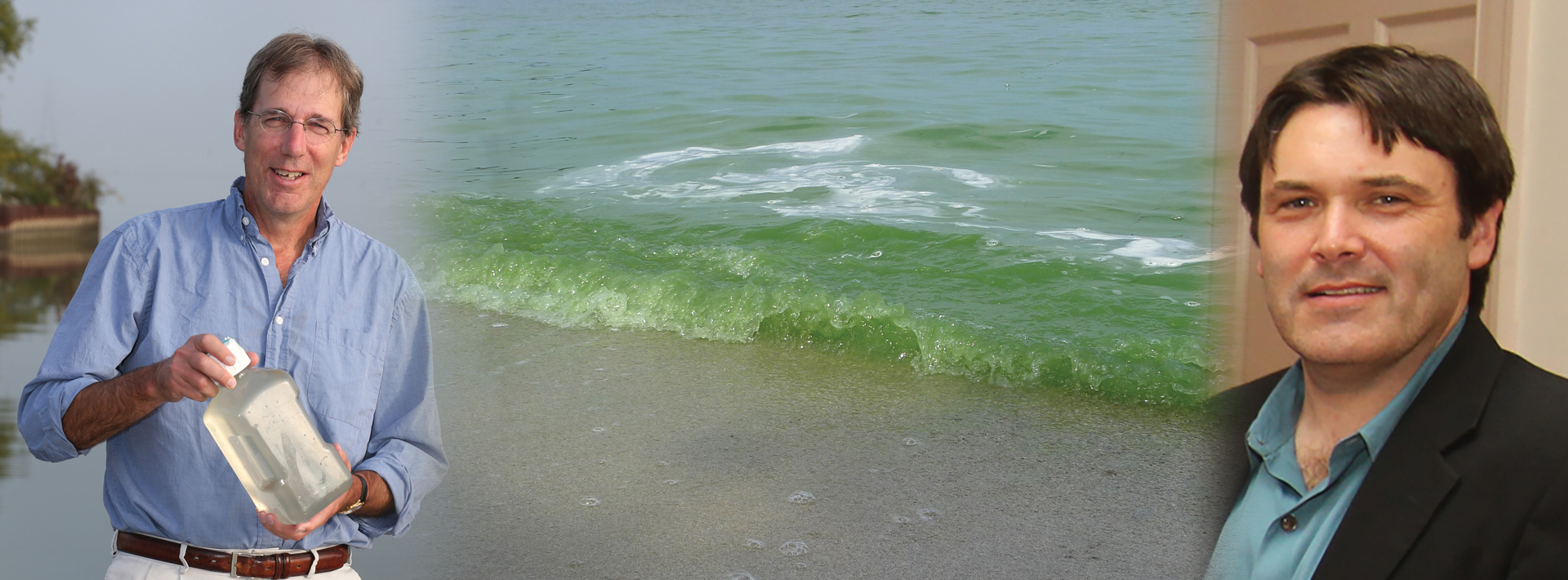Public forum Tuesday
BGSU to host global workshop investigating toxic algal blooms
 Dr. George Bullerjahn (left) and Dr. Mike McKay (right)
Dr. George Bullerjahn (left) and Dr. Mike McKay (right)
In August 2014, the city of Toledo issued a “do not drink” advisory on its water supply that directly affected over 500,000 people throughout northwest Ohio. A toxic algal bloom had polluted the water near the city’s intake in Lake Erie.
This problem is not unique to Lake Erie, but is in fact a global phenomenon that affects millions of people across the world.
BGSU is helping to tackle this problem head on. University algae researchers will host a workshop featuring the top experts from around the world discussing how to deal with the growth of harmful algal blooms. “Global Solutions to Regional Problems” will be held April 13 and 14 on campus.
Organized by BGSU biology faculty and algal bloom researchers Drs. George Bullerjahn and Mike McKay along with National Oceanic and Atmospheric Association (NOAA) scientist and collaborator Tim Davis and sponsored by the National Science Foundation (NSF), the goal of the workshop is to discuss the current science on bloom formers, along with identifying knowledge gaps regarding bloom prevention and remediation.
Additionally, discussion of case studies on current and prior remediation programs will help guide the development of a workshop paper that presents potential future strategies for bloom prevention, mitigation and long-term research goals.
While participation in the workshop itself is by invitation only, a NOAA-sponsored open forum will be held from 5:30-7:30 p.m. April 14 in 101 Olscamp Hall. Future research priorities and current best practices will be presented. Registration is recommended.
Bullerjahn, McKay and Tim Davis have studied such nuisance blooms throughout the Great Lakes, especially bloom-forming cyanobacteria in western Lake Erie, Sandusky Bay and Grand Lake St. Marys in west-central Ohio. Their labs use molecular genetic techniques to track the origins and abundance of toxic cyanobacteria throughout the bloom (summer) season.
Bullerjahn said the workshop will provide a fresh perspective on the problem. "Many productive discussions have happened regionally since last year's Toledo water crisis, but cyanobacterial blooms happen everywhere," he said. "Hearing from experts who study these blooms worldwide can provide a broader perspective on how these events can be managed."
Workshop presenters include: Boqiang Qin, Nanjing Institute of Geography and Limnology, China; Rainer Kurmayer, Universität Innsbruck, Austria; Hans Paerl, University of North Carolina; Steve Wilhelm, The University of Tennessee; and representatives from NOAA, the Environmental Protection Agency and Environment Canada.
These scientists will share their expertise on toxic blooms in their regions. According to Bullerjahn, the hope is to apply their knowledge to the problems
Updated: 12/02/2017 12:43AM
